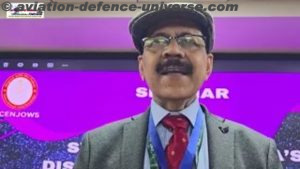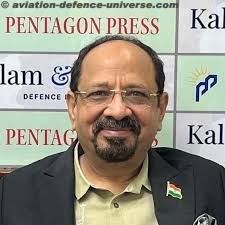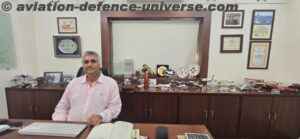
New Delhi. 19 October 2020. Landing overruns that occur on wet runways typically involve multiple contributing factors such as long touchdown, improper use of deceleration devices, tailwind and less available friction than expected. Several recent runway-landing incidents/accidents have raised concerns with wet runway stopping performance assumptions. Analysis of the stopping data from these incidents/accidents indicates the braking coefficient of friction in each case was significantly lower than expected for a wet runway as defined by Title 14 of the Code of Federal Regulations (14 CFR) part 25 § Section 25.109 and Advisory Circular (AC) 25-7D methods. So are grooved runways just the solution to avoid such aviation tragedies? Deepak Sharma, Managing Director of Wuerth India Pvt Ltd. in an exclusive interview to Aviation & Defence Universe (ADU) elaborates on the importance of grooved runways at all airports.
ADU. What is your product and its advantages in India?
DS. A grooved runway is a pavement surface that has discrete channels for water to escape, helping eliminate standing water and restoring tire friction coefficients on wet pavement. The grooves are cut transversely to the direction of airplane travel direction and are usually continuous to dry pavement lines for the entire length of the runway. Grooved runways would benefit airports in India by providing:
a. Reduced hydroplaning, both dynamic (standing water) as well as viscous (wet pavement with or without standing water).
b. A higher level of contact between tires and pavement under weather conditions causing wet pavement reducing accident potential.
c. Ample direction and breaking control of the aircraft when landing
d. Drainage of surface water to the pavement edge
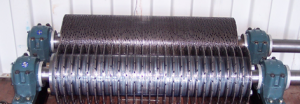
ADU. Are these product services mandated by Aviation Standards across the globe?
DS. The United States Federal Aviation Administration requires a grooved runway surface to manage safety on all runways used to receive turbojet aircraft. The US military requires grooved surfaces on all of its runways. Many other countries require or recommend grooved runway surfaces on both concrete and asphalt runways.
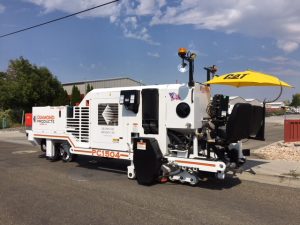
ADU. Does it obstruct the Airport managers to undergo grooving on operational runways?
DS. The installation of runway grooves is very flexible in that the construction operations can take place during off peak hours in short shifts if necessary. The grooving machines can be removed from an active runway in minutes and there is no lag time while waiting for the pavement to cool or set-up as one might experience when installing asphalt pavement.
ADU. How helpful will it be in preventing aircraft accidents while landing or take offs?
DS. Multiple research studies and accident investigations have shown that grooved runways significantly reduce accidents. Research has shown that old and worn aircraft tires brake better on a grooved runway than new tires would on a non-grooved runway on wet pavement.
ADU. How will be the airlines and pilots benefit from it?
DS. Pilots have observed that transverse-grooved surfaces drastically reduce all types of skids on wet or flooded runways and provide positive nose-wheel steering during landing roll-out. Grooved surfaces also prevent the onset of drift and weathervaning. Pilots find overall ground handling and stopping characteristics on grooved surfaces a dramatic improvement over ungrooved surfaces. Grooved surfaces also prevent the onset of drift at touchdown in flooded areas due to high cornering forces. From the pilot’s point of view, the overall airplane ground handling and stopping characteristics on grooved surfaces show remarkable improvement over other surfaces. These facts were confirmed in flight test programs conducted by NASA.
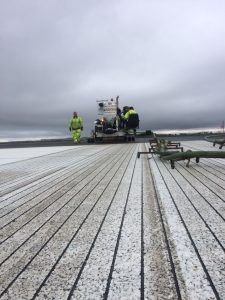
ADU. What is Hydroplaning ?
DS. Hydroplaning by the tires of an aircraft occurs when a layer of water builds between the wheels of the vehicle and the pavement surface, leading to a loss of traction that prevents the vehicle from responding to control inputs.
ADU. How severe Hydroplaning for Table top Runways ?
DS. Tabletop Airport are constructed on hilly or elevated terrains and their could be gorges on both the ends of the runway. The length of the runway too is substantially shorter compared to an average runway length. Hydroplaning is a condition in which standing water causes the moving wheel of an aircraft to lose contact with the load-bearing surface, that is the runway. This leads to the braking action of the wheel being rendered ineffective so that the aircraft’s speed can not be reduced after landing. Since the speed cannot be reduced due to hydroplaning and runway length being substantially shorter, this could lead to catastrophic accidents
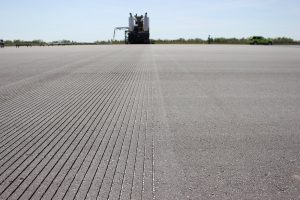
ADU. What would be the general maintenance for these Grooving and Grinding on Runways ?
DS. An appropriate maintenance program should ensure adequate side drainage, rubber removal and cleaning of runway (non-winter) contaminants. The overarching purpose of rubber removal is to restore the inherent friction characteristics. Every aircraft landing creates rubber deposits. Over time rubber deposits accumulate, primarily in the touchdown and braking area of a runway. As a result the texture is reduced over time. There are four methods to remove runway rubber:
a) water blasting;
b) chemical removal;
c) shot blasting; and
d) mechanical means.






































